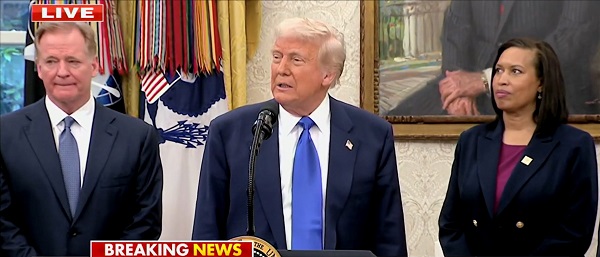Uncategorized
Ending the silence on sex abuse: Vatican holds summit

VATICAN CITY — If Pope Francis needed a concrete example to justify summoning church leaders from around the globe to Rome for a tutorial on clergy sex abuse, Sister Bernardine Pemii has it.
The nun, who recently completed a course on child protection policies at Rome’s Jesuit university, has been advising her bishop in Ghana on an abuse case, instructing him to invite the victim to his office to hear her story before opening an investigation. If Pemii hadn’t stepped in?
“It would have been covered. There would have been complete silence,” Pemii told The Associated Press recently. “And nothing would have happened. Nobody would have listened to the victim.”
Francis is convening this week’s summit at the Vatican to prevent
History’s first Latin American pope has made many of the same mistakes. As archbishop in Buenos Aires, he went out of his way to defend a famous street priest who was later convicted of abuse. He took a handful of measures early on in his papacy that undermined progress the Vatican had made in taking a hard line against rapists.
These include the pontiff seriously and publicly botching a well-known case of
The pope has now done an about-face and is bringing the rest of the church leadership along with him at the extraordinary summit that starts Thursday. The meeting will bring together some 190 presidents of bishops’ conferences, religious orders and Vatican offices for four days of lectures and workshops on preventing sex abuse in their churches, tending to victims, and investigating abuse when it does occur.
The Vatican isn’t expecting any miracles, and the pope himself has called for expectations to be “deflated.” But organizers say the meeting nevertheless marks a turning point in the way the Catholic Church has dealt with the problem, with Francis’ own conversion last year a key point of departure.
“I have been impressed by the humility of the Holy Father,” said Maltese Archbishop Charles Scicluna, the Vatican sex crimes investigator who helped set Francis straight on Chile. “He’s ready to say ‘I got that wrong. We’re not going to do it again. We’re going to do it right.'”
“I think that gives us great hope,” Scicluna said.
But the challenges are daunting as the message trickles down slowly.
Just this week, the online research group BishopAccountability released statistics from eight of the largest Catholic countries in the world, with the bishops from only one country — the U.S. — committing to a policy to permanently remove any priest who has sexually abused a child.
Bishops in some countries, including Brazil, don’t even have a published policy to speak of. In Italy, the president of the bishops’ conference met with victims for the first time last week — after summit organizers demanded it.
“I want to say that something important is going to come out of the week, but based on research we’ve done, I believe this church is nowhere close to enacting the reforms it must make to stop this epidemic,” said BishopAccountability’s Anne Barret Doyle.
Survivor Phil Saviano, who was crucial to the Boston Globe’s 2002 expose that first revealed the extent of the abuse and
“I really didn’t expect to hear them complimenting the news media and thanking you for helping them to come to better understanding of the nature of this problem that is so deeply entrenched within the Catholic Church,” Saviano told reporters.
Saviano is joining about a dozen abuse survivors, many of them activists, who are meeting with summit organizers Wednesday. A different group of survivors will join the bishops themselves, offering testimonies during daily prayers.
The message, said Chilean survivor Cruz, who organized the meeting with the committee members, is that bishops must listen to survivors and apply true zero tolerance at home.
“Those who have covered up, there is the door,” Cruz told AP.
While survivors are being well represented at the summit, women as a whole are not.
Of the 190 participants, 10 are religious sisters representing orders in the summit, and three women will address the meeting. Other than that, the meeting is by men and for men — the hierarchy of the church.
On the sidelines of the summit, women’s groups are demanding a greater voice and speaking out about the sexual abuse of adult women and religious sisters in the church — a scandal that has recently come to light after Francis acknowledged it was a problem.
“I do not have much hope for this meeting and we were already warned by Pope Francis not to have hope,” said Virginia Saldanha, secretary of the Indian Women Theologians Forum. “I see that it is the people … that have to raise voices, voices that can bring about change.”
___
AP producer Trisha Thomas contributed to this report.
Nicole Winfield, The Associated Press
Uncategorized
CNN’s Shock Climate Polling Data Reinforces Trump’s Energy Agenda


From the Daily Caller News Foundation
As the Trump administration and Republican-controlled Congress move aggressively to roll back the climate alarm-driven energy policies of the Biden presidency, proponents of climate change theory have ramped up their scare tactics in hopes of shifting public opinion in their favor.
But CNN’s energetic polling analyst, the irrepressible Harry Enten, says those tactics aren’t working. Indeed, Enten points out the climate alarm messaging which has permeated every nook and cranny of American society for at least 25 years now has failed to move the public opinion needle even a smidgen since 2000.
Appearing on the cable channel’s “CNN News Central” program with host John Berman Thursday, Enten cited polling data showing that just 40% of U.S. citizens are “afraid” of climate change. That is the same percentage who gave a similar answer in 2000.
Dear Readers:
As a nonprofit, we are dependent on the generosity of our readers.
Please consider making a small donation of any amount here.
Thank you!
Enten’s own report is an example of this fealty. Saying the findings “kind of boggles the mind,” Enten emphasized the fact that, despite all the media hysteria that takes place in the wake of any weather disaster or wildfire, an even lower percentage of Americans are concerned such events might impact them personally.
“In 2006, it was 38%,” Enten says of the percentage who are even “sometimes worried” about being hit by a natural disaster, and adds, “Look at where we are now in 2025. It’s 32%, 38% to 32%. The number’s actually gone down.”
In terms of all adults who worry that a major disaster might hit their own hometown, Enten notes that just 17% admit to such a concern. Even among Democrats, whose party has been the major proponent of climate alarm theory in the U.S., the percentage is a paltry 27%.
While Enten and Berman both appear to be shocked by these findings, they really aren’t surprising. Enten himself notes that climate concerns have never been a driving issue in electoral politics in his conclusion, when Berman points out, “People might think it’s an issue, but clearly not a driving issue when people go to the polls.”
“That’s exactly right,” Enten says, adding, “They may worry about in the abstract, but when it comes to their own lives, they don’t worry.”
This reality of public opinion is a major reason why President Donald Trump and his key cabinet officials have felt free to mount their aggressive push to end any remaining notion that a government-subsidized ‘energy transition’ from oil, gas, and coal to renewables and electric vehicles is happening in the U.S. It is also a big reason why congressional Republicans included language in the One Big Beautiful Bill Act to phase out subsidies for those alternative energy technologies.
It is key to understand that the administration’s reprioritization of energy and climate policies goes well beyond just rolling back the Biden policies. EPA Administrator Lee Zeldin is working on plans to revoke the 2010 endangerment finding related to greenhouse gases which served as the foundation for most of the Obama climate agenda as well.
If that plan can survive the inevitable court challenges, then Trump’s ambitions will only accelerate. Last year’s elimination of the Chevron Deference by the Supreme Court increases the chances of that happening. Ultimately, by the end of 2028, it will be almost as if the Obama and Biden presidencies never happened.
The reality here is that, with such a low percentage of voters expressing concerns about any of this, Trump and congressional Republicans will pay little or no political price for moving in this direction. Thus, unless the polls change radically, the policy direction will remain the same.
David Blackmon is an energy writer and consultant based in Texas. He spent 40 years in the oil and gas business, where he specialized in public policy and communications.
Uncategorized
Kananaskis G7 meeting the right setting for U.S. and Canada to reassert energy ties


Energy security, resilience and affordability have long been protected by a continentally integrated energy sector.
The G7 summit in Kananaskis, Alberta, offers a key platform to reassert how North American energy cooperation has made the U.S. and Canada stronger, according to a joint statement from The Heritage Foundation, the foremost American conservative think tank, and MEI, a pan-Canadian research and educational policy organization.
“Energy cooperation between Canada, Mexico and the United States is vital for the Western World’s energy security,” says Diana Furchtgott-Roth, director of the Center for Energy, Climate and Environment and the Herbert and Joyce Morgan Fellow at the Heritage Foundation, and one of America’s most prominent energy experts. “Both President Trump and Prime Minister Carney share energy as a key priority for their respective administrations.
She added, “The G7 should embrace energy abundance by cooperating and committing to a rapid expansion of energy infrastructure. Members should commit to streamlined permitting, including a one-stop shop permitting and environmental review process, to unleash the capital investment necessary to make energy abundance a reality.”
North America’s energy industry is continentally integrated, benefitting from a blend of U.S. light crude oil and Mexican and Canadian heavy crude oil that keeps the continent’s refineries running smoothly.
Each day, Canada exports 2.8 million barrels of oil to the United States.
These get refined into gasoline, diesel and other higher value-added products that furnish the U.S. market with reliable and affordable energy, as well as exported to other countries, including some 780,000 barrels per day of finished products that get exported to Canada and 1.08 million barrels per day to Mexico.
A similar situation occurs with natural gas, where Canada ships 8.7 billion cubic feet of natural gas per day to the United States through a continental network of pipelines.
This gets consumed by U.S. households, as well as transformed into liquefied natural gas products, of which the United States exports 11.5 billion cubic feet per day, mostly from ports in Louisiana, Texas and Maryland.
“The abundance and complementarity of Canada and the United States’ energy resources have made both nations more prosperous and more secure in their supply,” says Daniel Dufort, president and CEO of the MEI. “Both countries stand to reduce dependence on Chinese and Russian energy by expanding their pipeline networks – the United States to the East and Canada to the West – to supply their European and Asian allies in an increasingly turbulent world.”
Under this scenario, Europe would buy more high-value light oil from the U.S., whose domestic needs would be back-stopped by lower-priced heavy oil imports from Canada, whereas Asia would consume more LNG from Canada, diminishing China and Russia’s economic and strategic leverage over it.
* * *
The MEI is an independent public policy think tank with offices in Montreal, Ottawa, and Calgary. Through its publications, media appearances, and advisory services to policymakers, the MEI stimulates public policy debate and reforms based on sound economics and entrepreneurship.
As the nation’s largest, most broadly supported conservative research and educational institution, The Heritage Foundation has been leading the American conservative movement since our founding in 1973. The Heritage Foundation reaches more than 10 million members, advocates, and concerned Americans every day with information on critical issues facing America.
-

 illegal immigration2 days ago
illegal immigration2 days agoICE raids California pot farm, uncovers illegal aliens and child labor
-
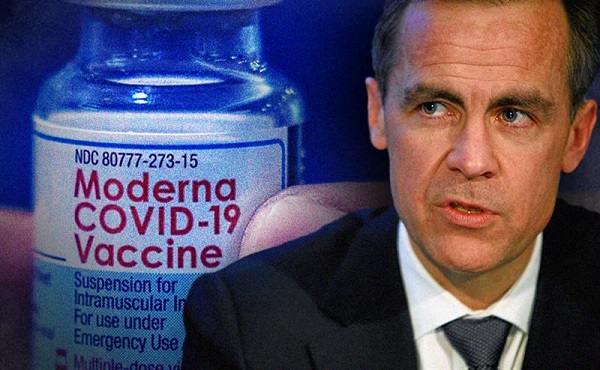
 Business9 hours ago
Business9 hours agoCarney Liberals quietly award Pfizer, Moderna nearly $400 million for new COVID shot contracts
-
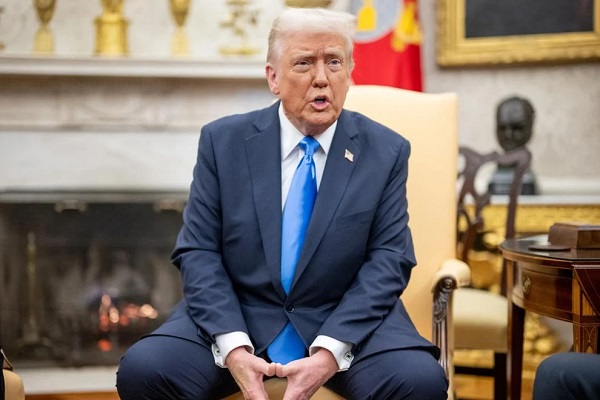
 Business2 days ago
Business2 days agoTrump to impose 30% tariff on EU, Mexico
-

 Uncategorized19 hours ago
Uncategorized19 hours agoCNN’s Shock Climate Polling Data Reinforces Trump’s Energy Agenda
-

 Energy1 day ago
Energy1 day agoLNG Export Marks Beginning Of Canadian Energy Independence
-
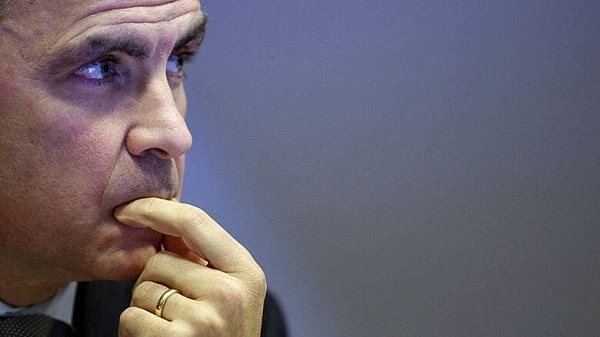
 Business1 day ago
Business1 day agoCarney government should apply lessons from 1990s in spending review
-
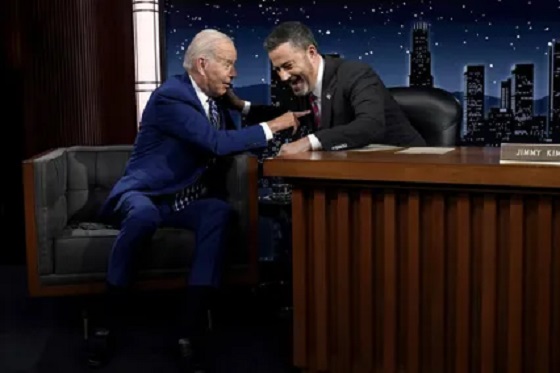
 Entertainment1 day ago
Entertainment1 day agoStudy finds 99% of late-night TV guests in 2025 have been liberal
-

 Frontier Centre for Public Policy19 hours ago
Frontier Centre for Public Policy19 hours agoCanada’s New Border Bill Spies On You, Not The Bad Guys
Uncategorized
Ending the silence on sex abuse: Vatican holds summit

VATICAN CITY — If Pope Francis needed a concrete example to justify summoning church leaders from around the globe to Rome for a tutorial on clergy sex abuse, Sister Bernardine Pemii has it.
The nun, who recently completed a course on child protection policies at Rome’s Jesuit university, has been advising her bishop in Ghana on an abuse case, instructing him to invite the victim to his office to hear her story before opening an investigation. If Pemii hadn’t stepped in?
“It would have been covered. There would have been complete silence,” Pemii told The Associated Press recently. “And nothing would have happened. Nobody would have listened to the victim.”
Francis is convening this week’s summit at the Vatican to prevent
History’s first Latin American pope has made many of the same mistakes. As archbishop in Buenos Aires, he went out of his way to defend a famous street priest who was later convicted of abuse. He took a handful of measures early on in his papacy that undermined progress the Vatican had made in taking a hard line against rapists.
These include the pontiff seriously and publicly botching a well-known case of
The pope has now done an about-face and is bringing the rest of the church leadership along with him at the extraordinary summit that starts Thursday. The meeting will bring together some 190 presidents of bishops’ conferences, religious orders and Vatican offices for four days of lectures and workshops on preventing sex abuse in their churches, tending to victims, and investigating abuse when it does occur.
The Vatican isn’t expecting any miracles, and the pope himself has called for expectations to be “deflated.” But organizers say the meeting nevertheless marks a turning point in the way the Catholic Church has dealt with the problem, with Francis’ own conversion last year a key point of departure.
“I have been impressed by the humility of the Holy Father,” said Maltese Archbishop Charles Scicluna, the Vatican sex crimes investigator who helped set Francis straight on Chile. “He’s ready to say ‘I got that wrong. We’re not going to do it again. We’re going to do it right.'”
“I think that gives us great hope,” Scicluna said.
But the challenges are daunting as the message trickles down slowly.
Just this week, the online research group BishopAccountability released statistics from eight of the largest Catholic countries in the world, with the bishops from only one country — the U.S. — committing to a policy to permanently remove any priest who has sexually abused a child.
Bishops in some countries, including Brazil, don’t even have a published policy to speak of. In Italy, the president of the bishops’ conference met with victims for the first time last week — after summit organizers demanded it.
“I want to say that something important is going to come out of the week, but based on research we’ve done, I believe this church is nowhere close to enacting the reforms it must make to stop this epidemic,” said BishopAccountability’s Anne Barret Doyle.
Survivor Phil Saviano, who was crucial to the Boston Globe’s 2002 expose that first revealed the extent of the abuse and
“I really didn’t expect to hear them complimenting the news media and thanking you for helping them to come to better understanding of the nature of this problem that is so deeply entrenched within the Catholic Church,” Saviano told reporters.
Saviano is joining about a dozen abuse survivors, many of them activists, who are meeting with summit organizers Wednesday. A different group of survivors will join the bishops themselves, offering testimonies during daily prayers.
The message, said Chilean survivor Cruz, who organized the meeting with the committee members, is that bishops must listen to survivors and apply true zero tolerance at home.
“Those who have covered up, there is the door,” Cruz told AP.
While survivors are being well represented at the summit, women as a whole are not.
Of the 190 participants, 10 are religious sisters representing orders in the summit, and three women will address the meeting. Other than that, the meeting is by men and for men — the hierarchy of the church.
On the sidelines of the summit, women’s groups are demanding a greater voice and speaking out about the sexual abuse of adult women and religious sisters in the church — a scandal that has recently come to light after Francis acknowledged it was a problem.
“I do not have much hope for this meeting and we were already warned by Pope Francis not to have hope,” said Virginia Saldanha, secretary of the Indian Women Theologians Forum. “I see that it is the people … that have to raise voices, voices that can bring about change.”
___
AP producer Trisha Thomas contributed to this report.
Nicole Winfield, The Associated Press
Uncategorized
CNN’s Shock Climate Polling Data Reinforces Trump’s Energy Agenda


From the Daily Caller News Foundation
As the Trump administration and Republican-controlled Congress move aggressively to roll back the climate alarm-driven energy policies of the Biden presidency, proponents of climate change theory have ramped up their scare tactics in hopes of shifting public opinion in their favor.
But CNN’s energetic polling analyst, the irrepressible Harry Enten, says those tactics aren’t working. Indeed, Enten points out the climate alarm messaging which has permeated every nook and cranny of American society for at least 25 years now has failed to move the public opinion needle even a smidgen since 2000.
Appearing on the cable channel’s “CNN News Central” program with host John Berman Thursday, Enten cited polling data showing that just 40% of U.S. citizens are “afraid” of climate change. That is the same percentage who gave a similar answer in 2000.
Dear Readers:
As a nonprofit, we are dependent on the generosity of our readers.
Please consider making a small donation of any amount here.
Thank you!
Enten’s own report is an example of this fealty. Saying the findings “kind of boggles the mind,” Enten emphasized the fact that, despite all the media hysteria that takes place in the wake of any weather disaster or wildfire, an even lower percentage of Americans are concerned such events might impact them personally.
“In 2006, it was 38%,” Enten says of the percentage who are even “sometimes worried” about being hit by a natural disaster, and adds, “Look at where we are now in 2025. It’s 32%, 38% to 32%. The number’s actually gone down.”
In terms of all adults who worry that a major disaster might hit their own hometown, Enten notes that just 17% admit to such a concern. Even among Democrats, whose party has been the major proponent of climate alarm theory in the U.S., the percentage is a paltry 27%.
While Enten and Berman both appear to be shocked by these findings, they really aren’t surprising. Enten himself notes that climate concerns have never been a driving issue in electoral politics in his conclusion, when Berman points out, “People might think it’s an issue, but clearly not a driving issue when people go to the polls.”
“That’s exactly right,” Enten says, adding, “They may worry about in the abstract, but when it comes to their own lives, they don’t worry.”
This reality of public opinion is a major reason why President Donald Trump and his key cabinet officials have felt free to mount their aggressive push to end any remaining notion that a government-subsidized ‘energy transition’ from oil, gas, and coal to renewables and electric vehicles is happening in the U.S. It is also a big reason why congressional Republicans included language in the One Big Beautiful Bill Act to phase out subsidies for those alternative energy technologies.
It is key to understand that the administration’s reprioritization of energy and climate policies goes well beyond just rolling back the Biden policies. EPA Administrator Lee Zeldin is working on plans to revoke the 2010 endangerment finding related to greenhouse gases which served as the foundation for most of the Obama climate agenda as well.
If that plan can survive the inevitable court challenges, then Trump’s ambitions will only accelerate. Last year’s elimination of the Chevron Deference by the Supreme Court increases the chances of that happening. Ultimately, by the end of 2028, it will be almost as if the Obama and Biden presidencies never happened.
The reality here is that, with such a low percentage of voters expressing concerns about any of this, Trump and congressional Republicans will pay little or no political price for moving in this direction. Thus, unless the polls change radically, the policy direction will remain the same.
David Blackmon is an energy writer and consultant based in Texas. He spent 40 years in the oil and gas business, where he specialized in public policy and communications.
Uncategorized
Kananaskis G7 meeting the right setting for U.S. and Canada to reassert energy ties


Energy security, resilience and affordability have long been protected by a continentally integrated energy sector.
The G7 summit in Kananaskis, Alberta, offers a key platform to reassert how North American energy cooperation has made the U.S. and Canada stronger, according to a joint statement from The Heritage Foundation, the foremost American conservative think tank, and MEI, a pan-Canadian research and educational policy organization.
“Energy cooperation between Canada, Mexico and the United States is vital for the Western World’s energy security,” says Diana Furchtgott-Roth, director of the Center for Energy, Climate and Environment and the Herbert and Joyce Morgan Fellow at the Heritage Foundation, and one of America’s most prominent energy experts. “Both President Trump and Prime Minister Carney share energy as a key priority for their respective administrations.
She added, “The G7 should embrace energy abundance by cooperating and committing to a rapid expansion of energy infrastructure. Members should commit to streamlined permitting, including a one-stop shop permitting and environmental review process, to unleash the capital investment necessary to make energy abundance a reality.”
North America’s energy industry is continentally integrated, benefitting from a blend of U.S. light crude oil and Mexican and Canadian heavy crude oil that keeps the continent’s refineries running smoothly.
Each day, Canada exports 2.8 million barrels of oil to the United States.
These get refined into gasoline, diesel and other higher value-added products that furnish the U.S. market with reliable and affordable energy, as well as exported to other countries, including some 780,000 barrels per day of finished products that get exported to Canada and 1.08 million barrels per day to Mexico.
A similar situation occurs with natural gas, where Canada ships 8.7 billion cubic feet of natural gas per day to the United States through a continental network of pipelines.
This gets consumed by U.S. households, as well as transformed into liquefied natural gas products, of which the United States exports 11.5 billion cubic feet per day, mostly from ports in Louisiana, Texas and Maryland.
“The abundance and complementarity of Canada and the United States’ energy resources have made both nations more prosperous and more secure in their supply,” says Daniel Dufort, president and CEO of the MEI. “Both countries stand to reduce dependence on Chinese and Russian energy by expanding their pipeline networks – the United States to the East and Canada to the West – to supply their European and Asian allies in an increasingly turbulent world.”
Under this scenario, Europe would buy more high-value light oil from the U.S., whose domestic needs would be back-stopped by lower-priced heavy oil imports from Canada, whereas Asia would consume more LNG from Canada, diminishing China and Russia’s economic and strategic leverage over it.
* * *
The MEI is an independent public policy think tank with offices in Montreal, Ottawa, and Calgary. Through its publications, media appearances, and advisory services to policymakers, the MEI stimulates public policy debate and reforms based on sound economics and entrepreneurship.
As the nation’s largest, most broadly supported conservative research and educational institution, The Heritage Foundation has been leading the American conservative movement since our founding in 1973. The Heritage Foundation reaches more than 10 million members, advocates, and concerned Americans every day with information on critical issues facing America.
-

 illegal immigration2 days ago
illegal immigration2 days agoICE raids California pot farm, uncovers illegal aliens and child labor
-

 Business9 hours ago
Business9 hours agoCarney Liberals quietly award Pfizer, Moderna nearly $400 million for new COVID shot contracts
-

 Business2 days ago
Business2 days agoTrump to impose 30% tariff on EU, Mexico
-

 Uncategorized19 hours ago
Uncategorized19 hours agoCNN’s Shock Climate Polling Data Reinforces Trump’s Energy Agenda
-

 Energy1 day ago
Energy1 day agoLNG Export Marks Beginning Of Canadian Energy Independence
-

 Business1 day ago
Business1 day agoCarney government should apply lessons from 1990s in spending review
-

 Entertainment1 day ago
Entertainment1 day agoStudy finds 99% of late-night TV guests in 2025 have been liberal
-

 Frontier Centre for Public Policy19 hours ago
Frontier Centre for Public Policy19 hours agoCanada’s New Border Bill Spies On You, Not The Bad Guys


